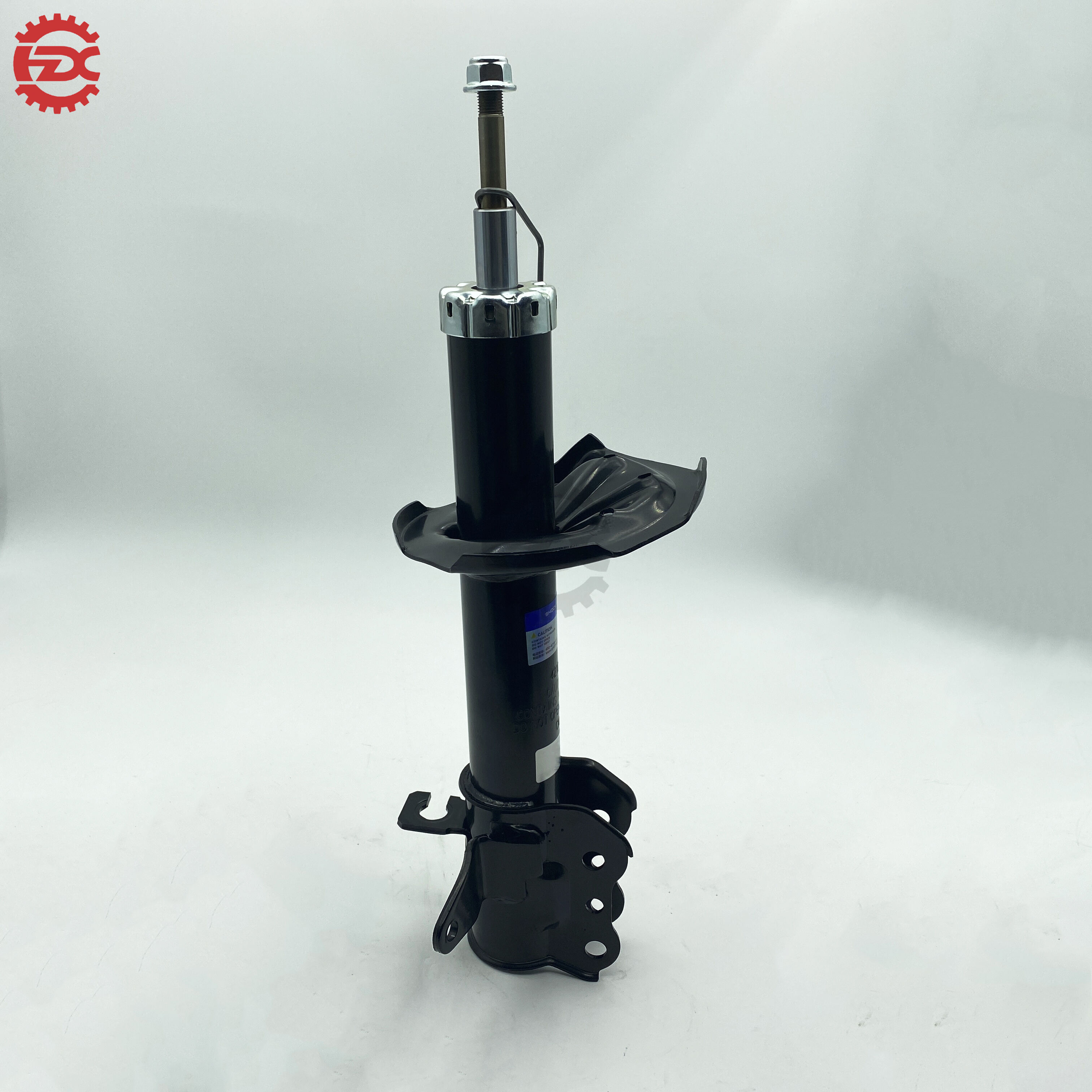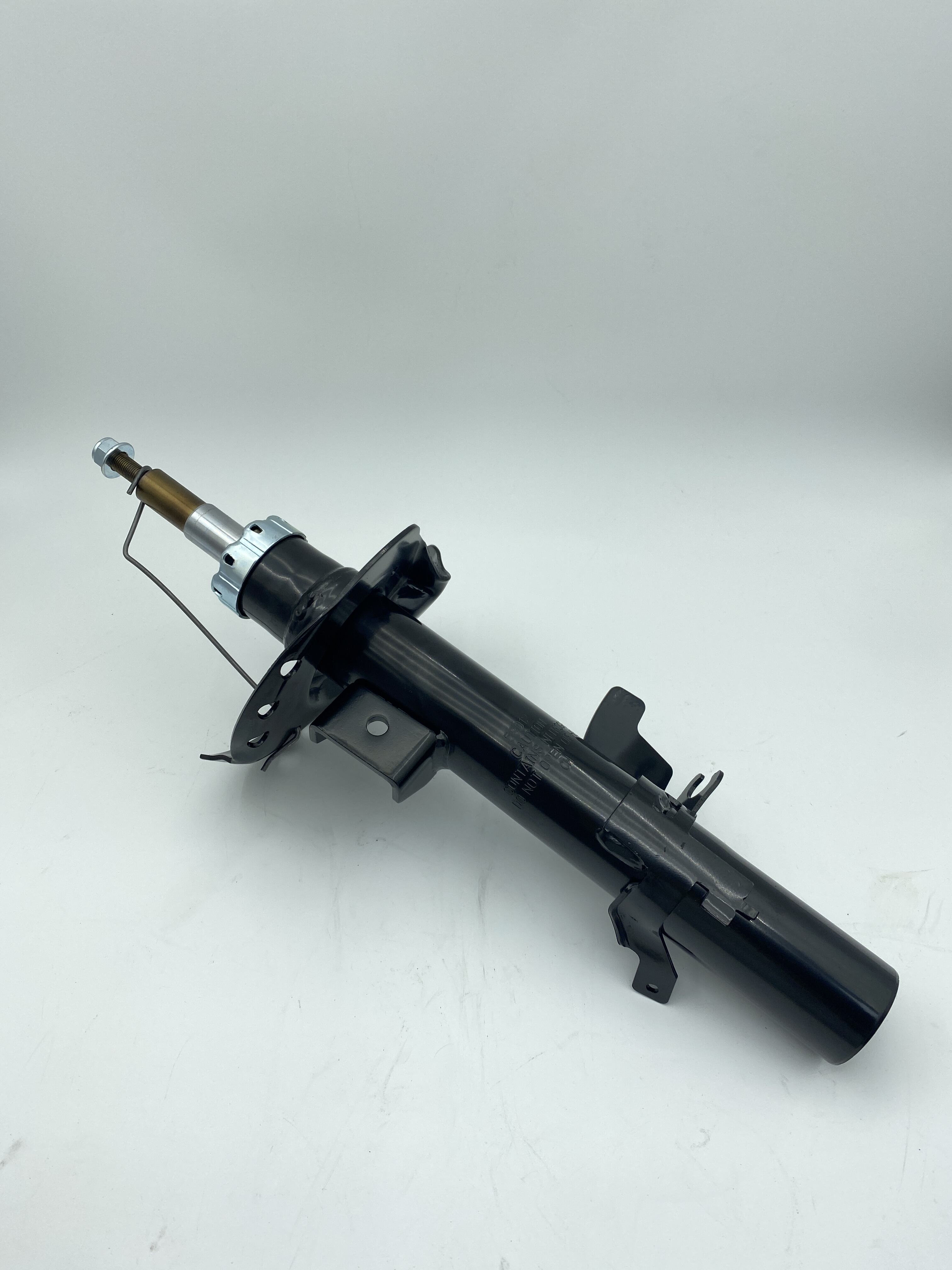התפקיד החיוני של אמטיגואדורס בביצועי הרכב
הבנה של הפונקציה המרכזית של אמטיגואדורס
מאפשרים , הידועים גם כמאומדים, הם רכיב קריטי בכל מערכת התלייה של רכב. הפונקציה העיקרית שלהם היא לנהל את הפגיעה ואת תנועת הקפיצה של הקפיצים והתלייה של הרכב. על ידי ספיגת האנרגיה הקינטית שנוצרת בתנועת הגלגלים, מאפשרים עוזרים לשמור על מגע עקבי של הגלגלים עם הכביש, מה שמבטיח אחיזה אופטימלית, עצירת frenagem ו שליטה. ללא מקשה, רכב היה קופץ יתר על המידה, במיוחד על פני גושים או משטחים עקומים, מה שהוביל לרحلة לא נוחה ולא בטוחה. בנוסף, רכיבים אלו מקטינים את הבلى בחלקים אחרים של הרכב על ידי הגבלת הלחץ שגורם לתנועה רציפה ורטט. לאורך זמן, זה משפר את הקיימות הכוללת של הרכב ומבטיח ניסיון נהיגה חלק ומבוקר יותר.
איך אמטיגואדורס תורמים לבטחון הנהג
בטיחות היא אחת הסיבות החשובות ביותר להבטיח שהסוללות של הרכב שלך פועלות כראוי. כאשר חומרי הרחקה במצב טוב, הם מקלילים את הסיכון לגלגול, לגלגול בזמן הבלום, ולחרדה מוגזמת של הגוף בפינות. יתרונות בטיחות אלה מושלמים משום שמנופפים יציבים את המסגרת של המכונית, ומונעים ממנה להגיב בצורה אגרסיבית מדי לתנאי הכביש. חומרי חוסר רגישות מיובשים או פגומים יכולים להגדיל באופן משמעותי את מרחק ההעצמה ולהפחית את דיוק ההגה. במצבי חירום, כגון בלמים פתאומיים או הימנעות מכשולים, חומרי חמצון הפועלים כראוי יכולים להיות ההבדל בין קריאה קרובה לתאונה חמורה. לכן, להבטיח כי אבטחי הלם שלך יבדקו באופן קבוע ויתחלפו כאשר יש צורך הוא היבט בסיסי של תחזוקה של הרכב שמשפיע ישירות על בטיחות הנהג והנוסעים.
בחירת מקפפות מתאימות לרכב שלך
סוגי מקפפות ויישומים שלהם
ישנם מספר סוגים של מקפצות הזמינות בשוק כיום, כל אחת עם מטרה ויישום ספציפיים. הסוגים הנפוצים ביותר כוללים מקפצות דו-צינוריות, חד-צינוריות, ממולאות גז, קoilover ומקפצות התואמות. מקפצות דו-צינוריות נמצאות לרוב ברכבים פרטיים יומיומיים עקב עלותן הנמוכה ותפקודן הנאמן. גרסאות חד-צינוריות, מצידן, מציעות פיזור חום מתקדם ותגובה מהירה יותר, מה שהופך אותן לאידיאליות לרכב עם ביצועים גבוהים ולרכבי שטח. מקפצות ממולאות גז מכילות טעינה של גז חנקן בלחץ שמנמיך היווצרות שטף ומשפרת את יעילות הבלימה. מקפצות coilover משלבות קפיץ ספירלי ו בּוֹלֵם זַעֲזוּעִים ביחידה אחת וغالבית משמשים ברכב ביצועי עבור גובה רכבת ותפעול ניתן להתאמה. לבסוף, מקשה היגוי ניתן להתאמה מאפשרים לנהגים לדייק את הגדרות הבלימה לנוחות או ביצועים, בהתאם לצרכים בהנעה. בחירת הסוג הנכון תלויה ברובה בסוג הרכב, הרגלי נהיגה והתנאי כביש.
שיקולים לפני רכישה
בעת בחירת מקפצות חדשות, יש להעריך מספר גורמים מרכזיים כדי להבטיח ביצועים ותאימות מיטביים. ראשית, יש לשקול את היצרן והмַדְלֵל של הרכב כדי למצוא מקפצות שמתאימות לדרישות המפעל או לשדרוג ביצועים. שנית, יש לחשוב על תנאי הנהיגה שלך – נהיגה עירונית, נסיעה בכביש מהיר או נהיגה בדרכים לא מסועפות, כולן מצריכות רמות שונות של בלימת הלם. כמו כן, חשוב להעריך את משקל הרכב, במיוחד אם אתה נוטה לסחוב מטענים כבדים או לגרור טרילרים, שכן זה יוצר מתח נוסף על מערכת התלוייה. תקציב הוא שיקול נוסף, אך חשוב לא להקריב איכות למען חיסכון, שכן מקפצות איכותיות מביאות עימן חוסן רב יותר ובטיחות גבוהה יותר. לבסוף, מוניטין המותג וחוות דעת של משתמשים יכולים לספק תובנות על אמינות, אך הבחירה הסופית צריכה להיות תלויה בפרופיל הנהיגה הייחודי שלך ובהעדפותיך בנוגע לשמירה.

תפעול וסימני בלאי
איך לזהות אמטיגואדורס שחוקים
זיהוי סימנים של אמטיגואדורס שחוקים הוא הכרח לשמירה על ביטחון וביצועי הרכב. אחד הסימנים הבולטים ביותר הוא קפיצה מוגזמת לאחר מעבר על בורות או כבישים לא חלקים. אם הרכב ממשיך להתנופף יותר מפעם אחת, ייתכן שהאמטיגואדורס כבר אינם פועלים כראוי. סימן נפוץ נוסף הוא הארכה של מרחק העצירה או תחושת אי יציבות במהלך הבלימה. ייתכן שתבחינו גם בדליפת נוזל סביב גוף המטאטא, מה שמעיד על כישלון פנימי של החותם. בלאי לא אחיד של הטרים הוא רמז נוסף שמערכת התלוי, ובכלל זה האמטיגואדורס, אינה מפזרת את העומס בצורה נכונה. בחלק מהמקרים ייתכן שתשמעו צחוקות או צלצולים בעת נהיגה על בורות או קרקע קשונה, שנגרמים על ידי רכיבים שחוקים או פגומים. בדיקות תחזוקה שגרתיות ונסיעות בדיקה עשויות לעזור לכם לזהות את הבעיות האלה מוקדם ככל האפשר, וכך למנוע תיקונים יקריים ורציפים יותר.
הנחיות לטיפול שגרתי ולחילוף
תחזוקת האמטיגואדורים שלך היא פשוטה למדי אך חשובה ביותר. רוב יצרני כלי רכב ממליצים לבדוק את האמטיגואדורים כל 20,000 עד 30,000 קילומטרים ולחלופן כל 80,000 עד 100,000 קילומטרים, תלוי בתנאי הנהיגה. במהלך הבדיקות, על המכנאי לבדוק דליפות, קורוזיה וסימני בלאי או נזק פיזיים. החלפה של כל ארבעת האמטיגואדורים בו-זמנית מבטיחה ביצועים מאוזנים ותפקוד עקבי. כמו כן, חשוב לבדוק רכיבים קשורים כמו בושינג התלה, תומכים של סטרוט וקפיצי סליל, שכן הם נוטים להתבלה בקצב דומה. שמירה על האמטיגואדורים במצב מיטבי לא רק מאריכה את חיי הצמיגים והתלה אלא גם מגבירה את יעילות השימוש בדלק על ידי הפחתת התנגדות גלגול מיותרת. התעלמות מתחזוקה קבועה עשויה להוביל לשליטה מופחתת ברכב ול העלאת עלויות תיקון לאורך זמן.
חדשנות וтенדנציות ב-2025
אמטיגואדורים חכמים וכריות ספיגה אלקטרוניות
ב-2025, עליית כלי רכב חכמים הביאה להצגת מקדחות בקרת אלקטרונית המותאמות אוטומטית לתנאי הכביש בזמנ אמת. מערכות מתקדמות אלו משתמשות בсенסורים ובמחשבים פנימיים כדי לעקוב אחרי המהירות, הקרקע והתנהגות הנהיגה, וmodifiable את כוח ההידämp accordingly. זה יוצר רמת נוחות ותפעול שלא נראתה מעוד, בין אם אתה נסע בכביש המהיר ובין אם אתה עובר דרך שביל קשים. מקדחות חכמות יכולות גם לתקשר עם מערכות אחרות ברכב כמו בלמים וכיוון כדי להגביר את הבטחה והדיוק. למרות שהמערכות הללו מורכבות ויקרות יותר, הן מציעות יתרונות לטווח רחוק לנהגים המחפשים דינמיקת רכב מתקדמת. ככל שהתכנולוגיה תהפוך לנפוצה יותר, נוכל לצפות בנגישות ושיוך גדולות יותר גם ברכב ממוצע.
חומרים ברורים ותהליך ייצור ידידותיים לסביבה
בזמן שהתעשייה האוטומобильית מתקדמת לעבר ייש sustainabilidad, גם עיצוב ותהליך הייצור של אמטיגואדורס השתנו. יצרנים משתמשים כעת בחומרים שניתנים tái עיבוד ומפחיתים את השימוש בمواد כימיות פוגעניות לסביבה בייצור בלמים. חומרים מרוכבים חדשים לא רק מפחיתים את המשקל אלא גם משפרים את החוזק והעמידות, מה שמפחית את תדירות ההחלפה. חלק מהמותגים מפתחים אפילו אמטיגואדורס עם נוזלים מתפרקים ביולוגית, שיש להם חותם אקולוגי קטן יותר. מגמות אלו המכוונות לסביבה עוזרות להפחית את הפליטות והפסולת הכלליים של כלי רכב, וכך מתאימות את המאמצים העולמיים ללוחמה בשינוי האקלים. עבור הצרכנים, בחירת אמטיגואדורס ידידותיים לסביבה היא דרך לתמוך בייש sustainability מבלי להקריב את הביצועים של כלי הרכב.
התקנה ותמיכה מקצועית
התקנה עצמית לעומת התקנה מקצועית
בעוד שאנשים מאוהבי רכב עשויה להיות בוחרת להתקין אמטיגואדורס בעצמם, מומלץ בדרך כלל לפנות לתמיכה מקצועית, במיוחד ברכבים מודרניים שיש בהם מערכות תלוות מורכבות. התקנת מקפאים מחייבת הגדרות מומלצות של טורק, יישור נכון, ובהחלט נ_calibration מחודשת של רכיבים אלקטרוניים. טכנאי מקצועי מוודא שכל הרכיבים מותקנים בצורה נכונה ובבטיחות. יתרה מכך, התקנה לא נכונה עשויה להוביל לבلى מוקדם או אפילו לנזק לרכיבים שבסביבה. אלא אם כן יש ברשותך את הכלים הדרושים, ניסיון, והדרכה טכנית מפורטת, ההתקנה המקצועית מציעה נחת ואחריות על הרכבים שלך. היא גם מאפשרת בדיקה מקצועית של מערכת התלוי כולה במהלך תהליך ההתקנה.
מתי יש לפנות לאיש מקצוע בתחום התלוי
לא כל בעיה בנוחות הנסיעה או הבקרת הרכב נובעת רק מהאבסורבר. אם שינית את אבסורברי ההליכה ועדיין חווה ביצועים גרועים, ייתכן שהגיע הזמן להתייעץ עם מומחה לתלייה. מומחים אלו יכולים להעריך את מערכת התלייה כולה, כולל זרועות בקרה, סריטים, קפיצים וחלקי היגוי. המומחים גם עברו הכשרה לזיהוי תקלות שאופרסנים כלליים עלולות להחמיץ, כגון אי-יישור של השלדה או נזק למסגרת. ייעוץ אצל מומחה מבטיח אבחנה מקצועית ותיקון ממוקד, מה שמגביר את היעילות ומחסך זמן וכסף לאורך זמן. עם הרכבים הופכים להיות מתוחכמים יותר, ידע מומחה הוא בעל ערך רב לשמירה על ביצועים מיטביים.
שאלות נפוצות
מתי כדאי להחליף אמטיגואדורים?
אבסורבר מומלץ להחליף ככלל בכל 80,000 עד 100,000 קילומטר, אך זה עשוי להשתנות בהתאם לדרך הנהיגה, תנאי הכבישים וסוג האבסורבר שנעשה בו שימוש.
האם אבסורבר שחוק עשוי להשפיע על בלאי הטיובים?
כן, אמטיגודורים שחוקים יכולים לגרום לבלאי לא אחיד של הטיובים עקב תנועת התלהמה לא תקינה וחוסר מגע עקבי עם הכביש, מה שמוביל לקיצור תוחלת החיים של הטיובים.
האם כל האמטיגודורים תואמים את הרכב שלי?
לא, עליכם לבחור אמטיגודורים המתאימים לייצור, דגם וסוג התלהמה של הרכב שלכם. תמיד פנו לדרישות היצרן או פנו לייעוץ מקצועי.
האם יש צורך להחליף את כל הארבעה אמטיגודורים בבת אחת?
למרות שזה לא תמיד הכרחי, החלפת כל הארבעה אמטיגודורים מבטיחה ייצוב אחיד ותנאי נהיגה עקביים, במיוחד אם כולם בני גיל דומה או שחוקים.

